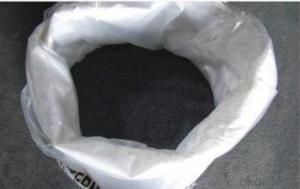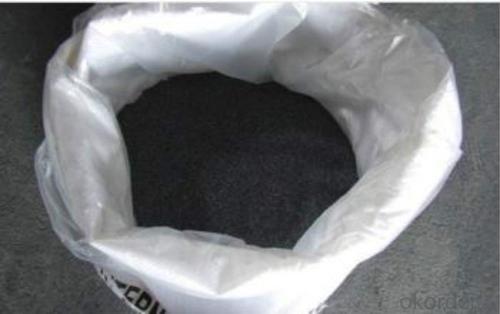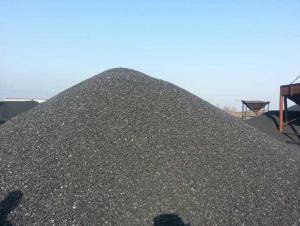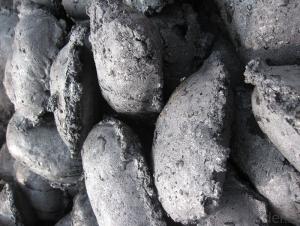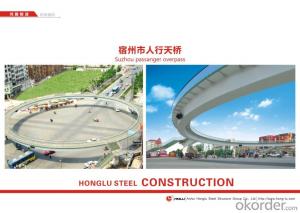Injection caron used in steel industry made in China
- Loading Port:
- Shekou
- Payment Terms:
- TT OR LC
- Min Order Qty:
- 21.9
- Supply Capability:
- 1019 m.t./month
OKorder Service Pledge
OKorder Financial Service
You Might Also Like
Introduction:
Calcined anthracite can be called carbon additive, carbon raiser, recarburizer, injection coke, charging coke, gas calcined anthracite.It is playing more and more important role in the industry
Best quality Anthracite as raw materials through high temperature calcined at over 2000℃ by the DC electric calciner with results in eliminating the moisture and volatile matter from Anthracite efficiently, improving the density and the electric conductivity and strengthening the mechanical strength and anti-oxidation. It has good characteristics with low ash, low resistivity, low sulphur, high carbon and high density. It is the best material for high quality carbon products. It is used as carbon additive in steel industry or fuel.
Features:
G-High Calcined Anthracite is produced when Anthracite is calcined under the temperature of 1240°C in vertical shaft furnaces. G-High Calcined Anthracite is mainly used in electric steel ovens, water filtering, rust removal in shipbuilding and production of carbon material.
Specifications:
F.C.% | 95MIN | 94MIN | 93MIN | 92MIN | 90MIN | 85MIN | 84MIN |
ASH % | 4MAX | 5MAX | 6 MAX | 6.5MAX | 8.5MAX | 12MAX | 13MAX |
V.M.% | 1 MAX | 1MAX | 1.0MAX | 1.5MAX | 1.5MAX | 3 MAX | 3 MAX |
SULFUR % | 0.3MAX | 0.3MAX | 0.3MAX | 0.35MAX | 0.35MAX | 0.5MAX | 0.5MAX |
MOISTURE % | 0.5MAX | 0.5MAX | 0.5MAX | 0.5MAX | 0.5MAX | 1MAX | 1MAX |
Pictures
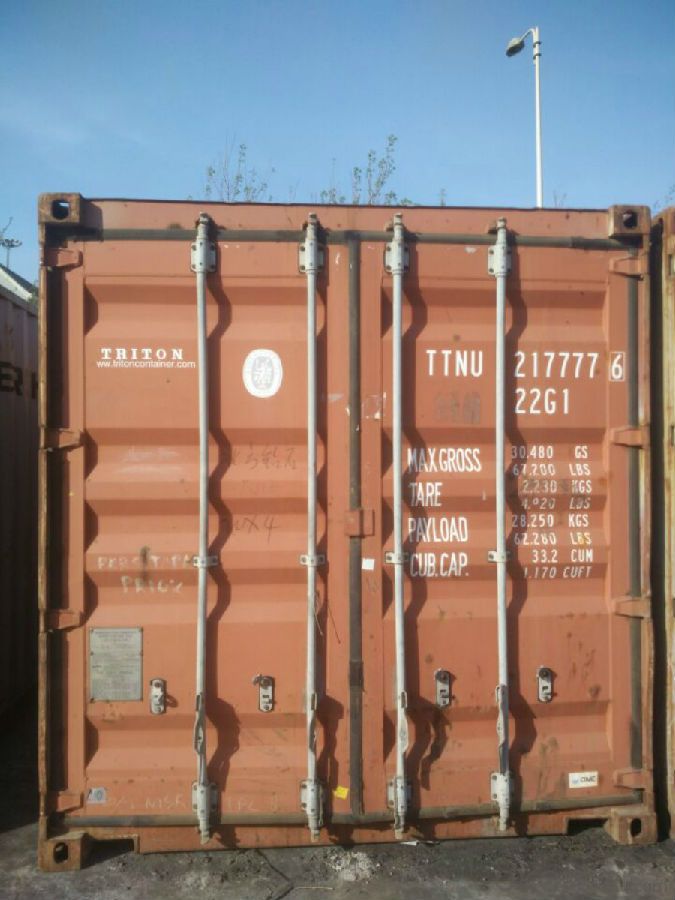
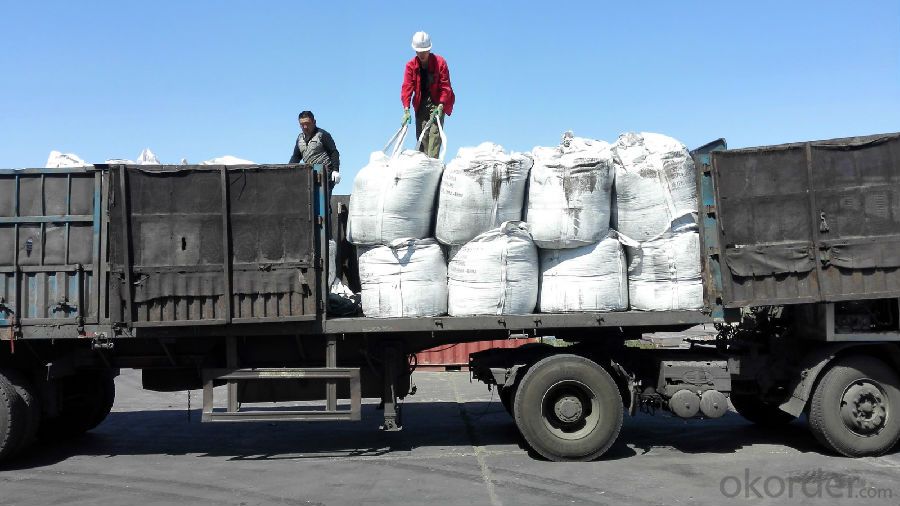
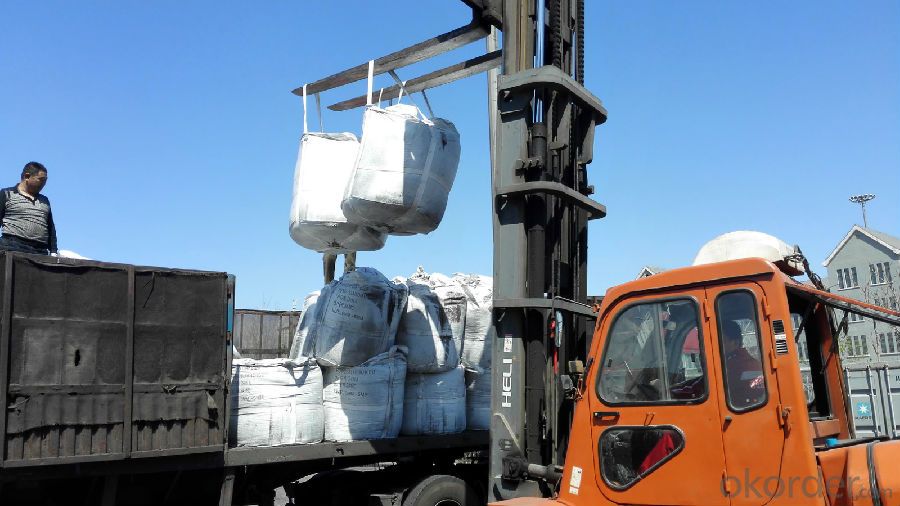
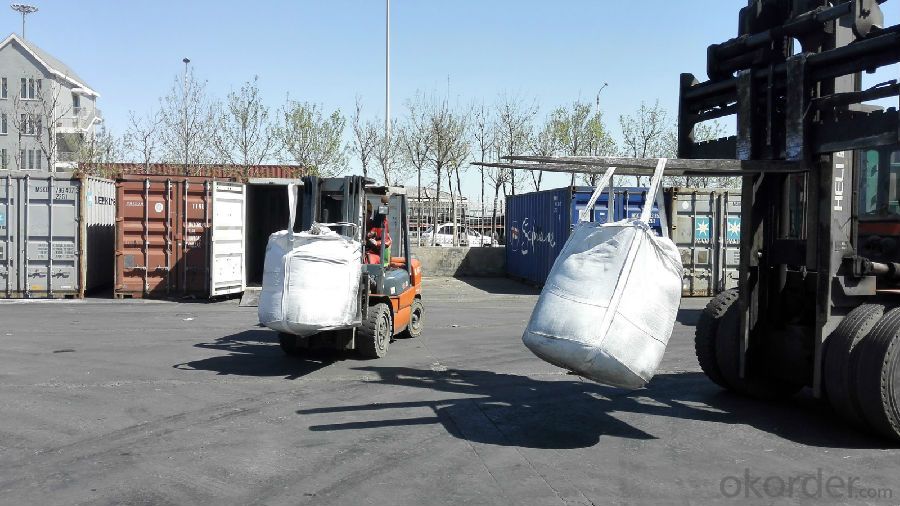
FAQ:
Packing:
(1). Waterproof jumbo bags: 800kgs~1100kgs/ bag according to different grain sizes;
(2). Waterproof PP woven bags / Paper bags: 5kg / 7.5kg / 12.5kg / 20kg / 25kg / 30kg / 50kg small bags;
(3). Small bags into jumbo bags: waterproof PP woven bags / paper bags in 800kg ~1100kg jumbo bags.
Payment terms
20% down payment and 80% against copy of B/L.
Workable LC at sight.. Thanks for your kind support and best regards
- Q: How does carbon affect the taste of food and beverages?
- The taste of food and beverages can be significantly altered by carbon, which can come in the form of activated charcoal or carbonation. Activated charcoal is known for its ability to absorb impurities and toxins, making it a popular ingredient in various food and drink products. When added to food and beverages, activated charcoal can eliminate unpleasant smells and tastes, resulting in a cleaner and more enjoyable flavor. Carbonation, on the other hand, is widely used in beverages to create a fizzy sensation and enhance the overall sensory experience. By dissolving carbon dioxide gas in liquids under pressure, bubbles are formed when the pressure is released, giving the drink a refreshing and effervescent quality. This carbonation effect can impart a tangy or slightly acidic taste to the beverage, which is often considered pleasant and invigorating. Furthermore, carbonation can also impact the taste of food. For instance, the carbonation found in beer or sparkling wine can help balance the richness of certain dishes, adding a refreshing element and providing a cleanse for the palate. Carbonation can also be incorporated into certain foods, such as bread or pastry dough, to aid in rising and create a lighter texture. It is worth noting that the impact of carbon on the taste of food and beverages can vary depending on the specific application and concentration used. Additionally, the preference for carbonated or charcoal-free options is subjective, as some individuals may prefer non-carbonated alternatives. Ultimately, the use of carbon in culinary applications offers a multitude of possibilities for enhancing taste and providing unique sensory experiences.
- Q: What is carbon emission and what harm does it do? How can carbon dioxide be prevented?
- They also believe that the mechanism of independent coking causes and synthesis gas generation, through the use of appropriate catalyst can avoid from kinetics of coke.It is found that the effect of catalyst by coke gas ratio of material. In 750 degrees, when n (CH4): n (O2) = 2, the catalyst produces a large amount of coke; when n (CH4): n (O2) = 1.75, the catalyst activity is low, but no coke formation; when n (CH4) n (O2) =1.78, the coke on the catalyst surface to achieve single steady-state distribution, almost no decrease of catalyst activity; continuously for 50 hours at 800 DEG C, and the catalyst is very stable.Prevention: 1., the temperature should not be too high, 2. water carbon ratio to a reasonable 3, to ensure the quality of the catalyst
- Q: Is carbon a metal or non-metal?
- Carbon is a non-metal. It is located in group 14 of the periodic table, also known as the carbon group. Non-metals generally have properties opposite to those of metals, such as being poor conductors of heat and electricity, having low melting and boiling points, and being brittle. Carbon, specifically, is known for its ability to form a variety of allotropes, including graphite and diamond. These allotropes have different physical and chemical properties, but they all share the characteristic of being non-metals.
- Q: How can I see if a battery can be used to recharge it?Can not all carbon batteries charge?
- Can not but about 4 times more than that of carbon battery alkaline batteries we usually use 5 batteries and 7 batteries into several carbon batteries alkaline batteries, carbon battery prices cheaper than half cheaper but durable alkaline battery alkaline batteries and strong power in general can reach carbon batteries are not can charge are one-time non rechargeable battery voltage both 1.5V are generally belongs to the zinc manganese batteryNo. 5 and No. 7 rechargeable battery is generally divided into two kinds of nickel cadmium battery NiMH battery is the two voltage of Ni MH battery capacity rechargeable nickel cadmium batteries so the current market is generally greater than the mountain NiCd battery has been relatively rare these two batteries each day is 1.2V can be chargedNote that our commonly used mobile phone lithium battery voltage is generally about 3.6 to 3.7V, or 3.6 multiples, so do not make the No. 5 or 7 batteries
- Q: How does carbon affect the formation of air pollution in urban areas?
- Carbon does not directly affect the formation of air pollution in urban areas. However, carbon-based pollutants, such as carbon monoxide and carbon dioxide, which are released from the burning of fossil fuels, contribute significantly to air pollution in urban areas.
- Q: What are the impacts of carbon emissions on the stability of deserts?
- Deserts are significantly affected by carbon emissions, which have various consequences. One major consequence is the worsening of desertification, where fertile land transforms into desert. Carbon emissions contribute to global warming, resulting in higher temperatures and increased evaporation. This, in turn, reduces soil moisture and increases aridity in desert regions, intensifying desertification and causing deserts to expand. Furthermore, carbon emissions also impact precipitation patterns, directly affecting desert stability. Climate change leads to shifts in weather patterns, causing some areas to experience reduced rainfall and others to face more frequent and intense droughts. These precipitation changes further worsen desertification processes and increase desert instability. Another effect of carbon emissions on desert stability is the increased occurrence and intensity of dust storms. As global warming leads to drier conditions and less vegetation cover, the risk of dust storms rises. These storms transport large amounts of fine particulate matter, including dust and sand, over long distances, resulting in negative consequences. Dust storms damage infrastructure, harm human health, degrade air quality, and contribute to desertification by removing fertile topsoil. Moreover, the impacts of carbon emissions on deserts extend beyond ecological stability and have socio-economic implications. Many desert communities rely on agriculture and natural resources for their livelihoods. The destabilization of deserts due to carbon emissions can reduce agricultural productivity, increase food insecurity, and cause economic hardship for these communities. Additionally, people may be displaced from desert regions due to desertification, leading to increased migration and social instability. In conclusion, the stability of deserts is greatly affected by carbon emissions. They intensify desertification, alter precipitation patterns, increase the frequency and intensity of dust storms, and have socio-economic consequences. It is vital to address carbon emissions through climate change mitigation strategies to minimize these impacts and ensure the long-term stability of desert ecosystems and the communities dependent on them.
- Q: What are the environmental impacts of carbon emissions from industries?
- The environmental consequences resulting from industries' carbon emissions are significant and extensive. To begin with, carbon emissions contribute to the greenhouse effect, resulting in global warming and climate change. The excessive release of carbon dioxide and other greenhouse gases into the atmosphere traps heat, leading to a rise in the Earth's temperature. Consequently, polar ice caps melt, sea levels increase, and extreme weather events like hurricanes and droughts occur. These alterations disrupt ecosystems, cause biodiversity loss, and jeopardize the survival of various species. Furthermore, carbon emissions contribute to air pollution. Industries release not only carbon dioxide but also harmful pollutants like sulfur dioxide, nitrogen oxides, and particulate matter. These pollutants have adverse effects on human health, causing respiratory and cardiovascular problems, and even premature death. Additionally, they contribute to the creation of smog and acid rain, causing further harm to ecosystems and endangering plant and animal life. Moreover, carbon emissions from industries negatively impact water systems. When carbon dioxide dissolves in water, it forms carbonic acid, resulting in a decrease in pH levels and increased acidity. This acidification harms marine life, especially organisms with calcium carbonate shells or skeletons, such as coral reefs, shellfish, and plankton. The disruption of marine ecosystems can have a ripple effect on other species and disturb the food chain. Lastly, carbon emissions contribute to deforestation and habitat destruction. Industries often rely on fossil fuels for energy, leading to the clearing of forests to make way for mining or drilling operations. This destruction of natural habitats not only reduces biodiversity but also releases stored carbon from trees into the atmosphere, exacerbating the carbon emissions problem. To address these environmental impacts, industries must prioritize the reduction of carbon emissions. This can be achieved by adopting cleaner and more sustainable energy sources, implementing energy-efficient technologies, and enforcing stricter regulations and policies. Transitioning to renewable energy, improving industrial processes, and investing in carbon capture and storage technologies are vital steps toward mitigating the environmental consequences of industries' carbon emissions.
- Q: What is carbon dating and how does it work?
- The age of organic materials, like wood, cloth, and bone, can be determined using carbon dating, a scientific method. This method measures the quantity of carbon-14 (C-14) present in the sample. It is based on the principle that all living organisms contain a small amount of radioactive carbon-14, which is created in the upper atmosphere when nitrogen atoms are hit by cosmic rays. Over time, this radioactive form of carbon decays and transforms into nitrogen-14. To begin the process of carbon dating, a sample is collected from the object of interest. Typically, this sample consists of organic matter that was once part of a living organism. The sample is then treated to remove any impurities and made ready for analysis. Scientists measure the ratio of C-14 to stable carbon-12 (C-12) in the sample to determine its age. This measurement is carried out using an accelerator mass spectrometer (AMS), an instrument with high sensitivity that can detect and measure extremely low levels of C-14. By comparing the ratio of C-14 to C-12 in the sample with the known ratio in the atmosphere at the time the organism died, scientists can calculate the time that has passed since the organism's death. The half-life of C-14, which is the time it takes for half of the radioactive isotope to decay, is approximately 5,730 years. This means that after 5,730 years, half of the C-14 in a sample will have transformed into nitrogen-14. By measuring the remaining amount of C-14 in a sample and knowing its half-life, scientists can estimate its age. Carbon dating is an invaluable tool for archaeologists, paleontologists, and geologists as it enables them to accurately determine the age of ancient artifacts, fossils, and geological formations. However, it is important to note that carbon dating is effective only for materials up to around 50,000 years old since beyond this point, the remaining amount of C-14 becomes too small to measure accurately.
- Q: What does "2T-250,1U-200@300" and "1Y-100" mean in carbon fiber cloth reinforcement?
- Upstairs to a very comprehensive, I made of carbon fiber cloth
- Q: What is the boiling point of carbon?
- The boiling point of carbon, a nonmetallic element, depends on its allotrope. Carbon has multiple allotropes, including graphite and diamond, each with different physical properties. Graphite, which consists of layers of carbon atoms arranged in a hexagonal lattice, does not have a boiling point since it sublimes directly from a solid to a gas. On the other hand, diamond, which is composed of carbon atoms arranged in a three-dimensional lattice, also does not have a boiling point as it undergoes direct sublimation. Therefore, carbon does not have a boiling point in its pure elemental form.
Send your message to us
Injection caron used in steel industry made in China
- Loading Port:
- Shekou
- Payment Terms:
- TT OR LC
- Min Order Qty:
- 21.9
- Supply Capability:
- 1019 m.t./month
OKorder Service Pledge
OKorder Financial Service
Similar products
Hot products
Hot Searches
